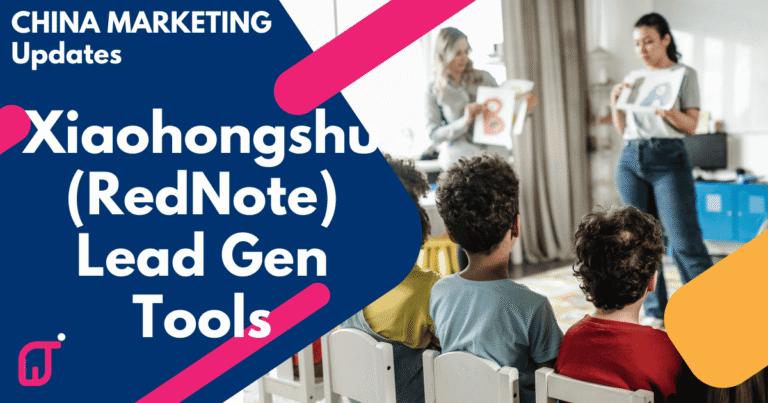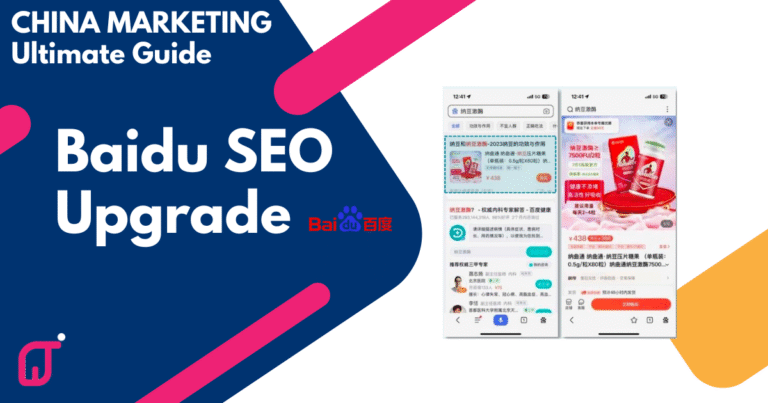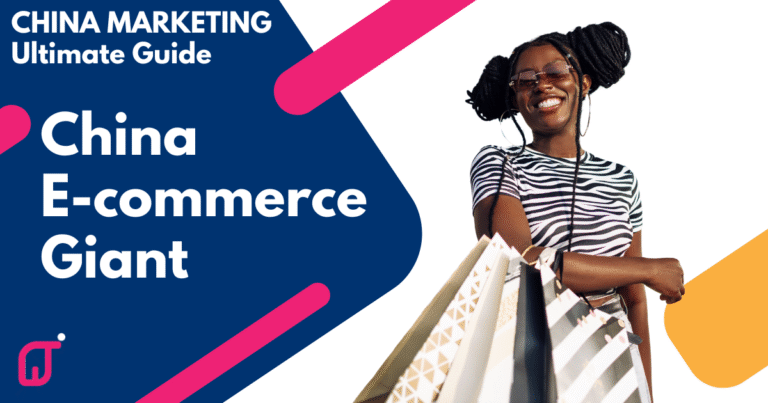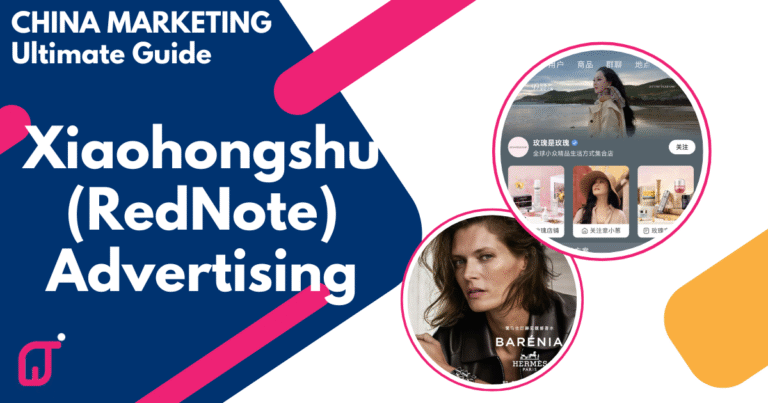Xiaohongshu Marketing: The Secret Weapon for Foreign Brands Entering China
Let’s get real—xiaohongshu marketing is not a trend; it’s a fundamental shift in how foreign brands break into China. If you’re Googling red note social media, you’re already behind. This isn’t Instagram with Chinese subtitles. It’s a trust-driven ecosystem where purchase decisions happen before users even land on your product page.
In this post, I’ll unpack what Xiaohongshu really is, why it’s exploding among China’s most influential consumers, and how you can build a brand they actually want to buy from. No recycled “China is big” fluff—just what works, what doesn’t, and how we at Twish guide our clients to launch and scale using Red.
What Is Xiaohongshu—and Why Should You Care?
Let me give it to you straight: if your China marketing plan doesn’t include xiaohongshu marketing, you’re not even in the game. And no, I’m not saying that to sell hype. I’m saying it because, in 2025, Xiaohongshu is the first touchpoint where real Chinese consumers decide if they even trust your brand enough to click.
You might have heard it called “Red”—or red note social media. That’s because in Chinese, Xiaohongshu literally means “Little Red Book” (小红书). But what most Western businesses miss is that it’s not just another Chinese app like WeChat or Douyin. It’s a search engine meets social diary, where recommendations, visual storytelling, and word-of-mouth carry more weight than flashy ads or deep discounts.
So, What Exactly Is Xiaohongshu?
Imagine Pinterest had a baby with Instagram, then gave it a Chinese passport and a shopping habit. That’s Xiaohongshu. Originally launched in 2013 as a travel-and-shopping guide for overseas buyers, it’s now evolved into the go-to platform for China’s most influential spenders—urban Gen Z and Millennial women with both the curiosity and cash to explore new brands.
As of 2025, it commands over 300 million monthly active users. And these aren’t passive scrollers. They’re active searchers. They go on Xiaohongshu to solve problems like:
- “What’s the best LED mirror for small apartments?”
- “Is this skincare product good for sensitive skin?”
- “Where did she buy that Japandi-style cabinet?”
And here’s what makes this platform different: instead of being hit with ads, they’re shown user-generated notes—posts written by creators, micro-influencers, or everyday people sharing their honest experiences. That’s why xiaohongshu marketing works so well—it’s not about interrupting someone with a banner; it’s about showing up when they’re already in a decision mindset.
What Makes It Different?
- Content-first, not commerce-first: Users scroll for stories, reviews, and ideas—not just products
- Trust economy: People don’t just browse—they save notes, comment, and follow micro-creators they relate to
- Visual + longform mix: Static carousels, aesthetic imagery, and honest storytelling captions dominate
- In-app search culture: A user types “small kitchen remodel” or “minimalist sofa” and expects real user reviews—not ads
This makes xiaohongshu marketing less about traffic and more about pulling the right customer into a journey.
A Real-World Turnaround: From Zero Leads to 2M RMB
Let me tell you about a founder we worked with—a boutique home décor brand owner. When he first came to Twish in Q4 of 2024, he hadn’t landed a single new client in almost a year. Not one, because he replied on traditional channel to acquire customers for a long while.
He had a decent product, but zero presence on Xiaohongshu. No brand narrative, no visibility, no qualified leads. His old strategies—word of mouth, group purchase and a few offline partnerships—had flatlined.
So, we rebuilt everything from the ground up.
We started by crafting a clear, emotionally resonant brand positioning—not just “premium furniture,” but a sense of calm, curated living for a post-pandemic generation seeking comfort in design. We then built a Xiaohongshu-native visual identity that felt relatable but aspirational: warm tones, real homes, user-first camera angles.
Then came the funnel: we scripted every part of the user journey. Content that seeded interest, DMs that converted to WeChat adds, and a customer service SOP covering everything from response time to pricing strategy and offer tiers. We even trained the founder himself on how to build trust during first-time chats.
But the most game-changing move? We helped him turn existing customers into KOS-style brand advocates. No influencers. No agency bloat. Just satisfied clients sharing their experience through their own Xiaohongshu notes—powered by a commission-only incentive.
In just 3 months, this once-stuck founder generated ¥400,000 in new sales from the RED NOTE channel alone. Over 200 qualified leads reached out via DM and were nurtured into full-funnel sales on WeChat. As of today? He’s crossed ¥2 million in total revenue—all driven by a smart, lean, and hyper-localised xiaohongshu marketing strategy.
That’s what Red can do.
So if you’re asking yourself, “What is red note social media?”, here’s the answer: it’s the platform where the right story told to the right person at the right moment creates outsized results. Not because it’s viral. Because it’s trusted.
The Psychology of Xiaohongshu Users
To win at xiaohongshu marketing, you need to stop thinking like a marketer—and start thinking like a user.
Here’s the truth: people don’t open red note social media to be sold to. They open it to solve problems, make better lifestyle choices, and see how real people live. They’re not just browsing—they’re building vision boards for the lives they want. And if your brand doesn’t help them do that, they’ll scroll right past.
Trust First, Everything Else Later
On Xiaohongshu, trust beats reach every single time. Users don’t care how many followers someone has—they care if that creator feels relatable. That’s why product reviews from micro-influencers or even real buyers often outperform polished KOL campaigns.
You’ll often see comments like:
“收藏了!” (“Saved it!”)
“谢谢分享,正好我也在看这个。” (“Thanks for sharing—I’ve been looking into this too.”)
These are mini trust signals. And the more of them you get, the more the Xiaohongshu algorithm rewards your content.
Decision-Making on RED NOTE Is Emotional, Not Logical
Chinese Gen Z and Millennial users (Xiaohongshu’s core base) make decisions based on:
- Visual storytelling: If it doesn’t look real, it doesn’t stick
- Peer validation: “If someone like me bought this, it must be good”
- Emotional resonance: Calm, aesthetic, and aspirational themes perform best
- Credibility through repetition: Users often save 3–5 similar posts before acting
This isn’t impulse buying. This is research disguised as social media.
From Discovery to DM
Here’s how a typical journey goes:
- User searches “小户型收纳设计” (“small apartment storage design”)
- They browse posts with 100+ saves, 10+ comments
- They follow, save, comment and maybe repost a few to their board
- If curious enough, they DM the poster
- That DM often leads to a WeChat add—and a sale
No flashy CTA. No discount code. Just a quiet, natural funnel built on relevance and timing.
So, if you want to win with xiaohongshu marketing, don’t chase algorithms—chase authenticity. Because on this platform, people aren’t just shopping. They’re listening.
KOL vs KOC vs KOS — Which Influencer Strategy Works Best?
When it comes to xiaohongshu marketing, the biggest mistake foreign brands make is assuming influencer marketing here works like Instagram. It doesn’t. On RED—aka red note social media—not all influencers are created equal.
You’ve got KOLs (Key Opinion Leaders), KOCs (Key Opinion Consumers), and even KOS (Sales)—and if you don’t understand who to use, when, and how, you’ll burn through budget fast without ever building trust.
So let’s break down the system—and how we actually use it at Twish.
KOLs: The Top of the Funnel
KOLs are your headline acts. Think of them as China’s equivalent of macro influencers or micro-celebrities. Most have follower counts in the hundreds of thousands to millions, and they deliver reach—fast.
When to use KOLs:
- You’re launching a new product or rebrand
- You need credibility with a wider lifestyle audience
- You want visibility beyond your own account’s reach
But be warned: KOLs come at a cost. A single static note from a top-tier creator can cost ¥20K to ¥100K, depending on the category. And without proper targeting or follow-up, engagement often falls short of expectations. Reach ≠ results.
KOCs: The Trust Builders
KOCs, or Key Opinion Consumers, are the heartbeat of Xiaohongshu marketing.
They’re everyday users—think 1K to 100K followers—who create relatable, real-life content. They don’t “sell.” They share. And that’s why people believe them.
Let me show you what this looks like in practice.
Real Example: Xpeng KOC Marketing Play
In 2023, Chinese EV brand Xpeng rolled out a full-scale KOC campaign on Xiaohongshu. Their goal? Build authentic trust with young, city-based buyers.
They didn’t use car reviewers or paid celeb endorsements. Instead, they chose everyday drivers from multiple cities and activated them around real-life use cases—commuting, weekend getaways, family road trips.
Here’s how they nailed it:
- Data-driven selection: Each KOC had 1K–10K followers and matched their ideal customer persona
- Content co-creation: Xpeng offered driving trials and creative guidance, but let users talk freely about battery range, smart driving features, and interior feel
- Scenario-based storytelling: Notes weren’t generic reviews—they were contextual:
“A week commuting in Guangzhou with Xpeng”
“Weekend road trip to Hangzhou with my toddler in the backseat” - Engagement engineering: Comments were actively guided:
“Does the smart driving feel intuitive?”
“Is the battery life realistic for daily use?”
And the results?
- 200M+ total impressions across 150 KOC notes
- 500+ average comment interactions per post
- 80% brand favourability lift based on platform data, especially around tech and range performance
That’s the power of KOC storytelling on red note social media—done right.
KOS: The Conversion Engines
Then there’s KOS—Key Opinion Sales. These aren’t influencers in the traditional sense. They’re your people. Your past customers. Your internal experts. Your community managers.
What we love at Twish is turning clients into KOS.
In one campaign, we helped a home décor brand turn their own customers into micro-creators—writing notes about their experience in exchange for commissions only. No big spend. No scripted campaigns. Just human storytelling, in authentic voices.
Within weeks, they’d built a mini army of unpaid ambassadors, with RED notes that delivered leads and trust at the same time.
Twish Strategy: Context > Clout
Here’s how we think about influencer marketing on Xiaohongshu:
- Use KOLs for firepower: launch bursts, product drops, rebrands
- Use KOCs for heartbeat: steady trust-building and social proof
- Use KOS for follow-through: turn buyers/staff into believers into sales
We don’t recommend blowing half your budget on one post from a beauty KOL with no sales funnel in place. We do recommend building a layered approach based on your brand stage, audience goals, and category trust curve.
Because on RED, a note that feels real beats a post that looks perfect.
Xiaohongshu Marketing Tactics That Actually Work
Xiaohongshu marketing isn’t about posting pretty pictures and hoping for likes. It’s about building a funnel that starts with trust and ends with action. And here’s the magic: that funnel doesn’t narrow—it widens over time. As more users save, comment, and share, your content reaches new, highly relevant circles. We call it the upside-down funnel effect—Xiaohongshu’s algorithm rewards authenticity with organic amplification.
To win, you’ve got to layer storytelling, searchability, native tools, and yes, smart paid traffic into a strategy that scales.
1. Product Seeding, Not Hard Selling
Seeding still reigns as the #1 way to build visibility on red note social media. But forget generic gifting to random influencers. What works is precision seeding.
Our typical process:
- Select creators based on real audience relevance—not follower count
- Offer value: exclusive product, limited test run, visual brief
- Co-develop a storytelling angle (e.g. “How I styled my 49㎡ flat with X furniture”)
- Track engagement across saves, comments, reposts—not just likes
The goal? Posts that look like organic notes, not ads. If it smells like a campaign, it fails.
2. Post Structure: Think Like a Lifestyle Editor
Xiaohongshu rewards creators who tell stories like bloggers, not like brands. A top-performing note often includes:
- A clean visual hook (natural light, authentic scenes)
- A carousel of 6–9 images—not just one hero shot
- A long-form caption that starts with a personal hook:
“As someone who lives in a 50㎡ flat with a toddler, storage is everything…” - Hashtags that reflect user intent (e.g., #storagetips #creamyinteriordesign)
- One or two “search bait” phrases like “Storage tips in a small apartment?” baked in
It’s not content—it’s contextualised content.
3. Comment Section = Funnel Warm-Up
You’re not just building visibility. You’re pre-qualifying leads. We help our clients to actively guide comment conversations:
We coach our clients to actively guide comment conversations:
- “Where to buy?” → Lead to DM
- “Where’s the coffee table from?” → Reply and DM follow-up
- Prompt users with soft CTAs hook:
“Comment below and I’ll send you our floor plan 💬🏠~”
4. What About Paid Ads on Xiaohongshu?
Yes—Xiaohongshu ads exist. But most brands use them wrong, they boost posts with low relevance, no warm-up, and zero funnel thinking.
At Twish, we treat RED advertising as an amplifier, not a crutch. You push a note that’s already working, not a new one that hasn’t proven itself.
Ultimate Guide to Xiaohongshu Advertising Strategy
We’ll cover that full playbook in a dedicated post—ad formats, targeting strategies, and how to avoid wasting but reach a great performance.
If you want xiaohongshu marketing that drives conversations, comments, and sales, start by acting like a user. Then layer in structure, rhythm, and analytics like a pro.
Red Note Social Media = Discovery + Conversion
Let’s be clear: red note social media isn’t just where Chinese consumers find your brand—it’s where they decide whether or not to trust it.
In the world of xiaohongshu marketing, discovery and conversion don’t sit in two separate buckets. They’re tightly braided. The same piece of content that builds curiosity is often the one that starts the DM conversation, gets saved for later, and leads to a WeChat add that becomes a sale.
How Discovery Works on RED
On Xiaohongshu, search is king. Users come to the platform with intent. They’re not doom-scrolling—they’re solving problems and curating lifestyle upgrades.
Common entry points:
“卧室灯光布置” (bedroom lighting setup)
“大龄敏感肌护肤” (skincare for mature, sensitive skin)
“法式餐边柜品牌推荐” (French sideboard brand suggestions)
Here’s what happens next:
- They see 8–10 relevant notes
- They save 3 or 4
- They revisit them later that evening or week
- They comment or DM for more info
- That conversation moves to WeChat
Your content is the salesperson—you just don’t see it working in real time.
The RED NOTE → WeChat Funnel in Action
We engineer Xiaohongshu content backward from the ideal WeChat conversation. Every post is designed to:
- Spark curiositi
- Open a DM
- Transfer trust to a human channel
- Close with clarity
For example:
A education company we helped created a note with almost 200 saves. The caption ended with:
“如果你也有准备艺术作品集的问题,可以私信我,我发你准备思路~”
(“If you’re also working on your art portfolio, DM me—happy to share how I approached mine 😘 ”)
Over 60 DMs.
40 added WeChat.
22 converted within two weeks.
Why This Beats Douyin for Conversion
Douyin is fast. Fun. Entertaining. But people go there to be distracted. Xiaohongshu is different.
- People come to RED NOTE to decide.
- They expect longer-form, more emotionally grounded content.
- They actually read captions. They study carousels. They search with purpose.
You don’t need a 50K ad budget to win—you need the right kind of trust-building content, followed by human response systems that move users down the funnel.
Twish POV: RED is the Engine, WeChat is the Deal Room
We never recommend service brands rely on Xiaohongshu alone. That’s a rookie mistake. You use RED to surface demand, prove your brand has substance, and trigger conversations.
Then you convert via WeChat—where quotes, follow-ups, and deposits happen. That’s the loop we build. And it’s why our clients outperform others who treat Xiaohongshu like a digital catalogue.
Who Should Use Xiaohongshu Marketing—And How to Play It Right
Let’s kill the myth early: xiaohongshu marketing isn’t just for beauty and fashion brands. It’s for any business that knows how to meet people where they’re emotionally searching—and that includes service providers, travel brands, and even industrial B2B giants.
The truth is, most brands can win on Red—if they understand what users are doing on the platform and how to show up accordingly.
For Product Brands: Standardised SKUs, Meet DTC Goldmine
If you’re selling a consumer product—skincare, homeware, electronics, baby goods—you’ve probably already been mentioned on Xiaohongshu. That’s the nature of red note social media: users share what they buy, what they regret, and what they’d recommend. The question is, are you part of that conversation by design or by accident?
Here’s what works best:
- Set up a verified brand account
- Launch an official e-commerce flagship store (小红书店铺)
- Enable distribution tools like 小清单(Shopping list) so other creators can help sell for you
- Seed KOC reviews across key search terms
- Include clear contact or DM options for customer follow-up
You don’t just get exposure. You build an ecosystem around your product that includes UGC + search + distribution—all in one app.
For Travel and Destination Marketing: RED Is the Top Funnel
If you’re in tourism, hospitality, or destination branding, you need to be on Xiaohongshu yesterday.
Since China reopened post-COVID, outbound travellers have come back with a vengeance. And RED has emerged as the #1 platform for Chinese users to search:
- Travel guides & Tips & Itinerary(攻略)
- Hotel recommendations
- Destination experiences
- Cruise reviews
- Local experiences + boutique stays
We’ve seen agencies, DMOs, and even cruise lines like Viking Cruise turn Xiaohongshu into their main booking driver—because users don’t just browse. They book.
You can even convert directly on the platform if you’ve activated the e-comm module or created a branded travel agency account.
And for boutique hotels? RED is your digital concierge.
For Service Brands: Leads, Not Likes
If you’re offering a service—say, interior design, fitness, cosmetic procedures, or coaching—xiaohongshu marketing becomes your inbound machine.
We’ve seen founders close five-figure service deals through RED DMs alone. The key is to build a personal brand, tell before-after stories, and include CTAs like:
- “DM me for floor plan~”
- “DM me for proposal~”
- “Share my living room design as reference~”
Users don’t want a catalogue—they want a connection.
What About B2B? Can Industrial Brands Use RED?
Surprisingly? Yes.
Even B2B companies can thrive on RED, especially large enterprises with the resources to do brand storytelling.
Think:
- Employer branding
- ESG narrative sharing
- Tech innovation explainers
- Behind-the-scenes factory stories
It’s not about lead gen. It’s about shaping public perception.
We’ve seen energy companies, logistics firms, and AI labs use Xiaohongshu to showcase culture, credibility, and leadership. No one’s buying cement mixers here. But when done well, it boosts trust across the board—from partners to future hires.
We ask, “What role should RED play in your brand’s China strategy?”
FAQ – Xiaohongshu Marketing for Foreign Brands
Xiaohongshu Is Where China Buys With Its Heart
If you’re still thinking Xiaohongshu is “just another app,” think again. It’s where real discovery happens. Where users scroll not for noise, but for insight. Where brands earn trust before they earn sales.
And most importantly—it’s where foreign brands win by showing up with empathy, local fluency, and story-first content. If you’re serious about building long-term value—not just views—this is your platform.
See more about our Xiaohongshu (RedNote) marketing services, helping you reaching Chinese consumer efficiently 👉 RedNote Marketing Services
Or, if you would like to know more about another super social App in China, with 1.2B users 👉 WeChat Marketing Services
At Twish, we’ve helped brands go from zero visibility to seven-figure pipelines, powered by one channel: Xiaohongshu. Leave your information and industry, we will come back to your with RED NOTE building strategy.








4 Comments